Hey there, future digital nomad or side-hustle builder!
Let’s talk about the dream for a second. You’ve seen the ads, haven’t you? The ones with someone lounging on a beach, laptop open, “passive income” rolling in. The allure of affiliate marketing is powerful – low startup costs, the flexibility to work from anywhere (yes, even here in the Philippines!), and the potential for real financial independence. You hear the success stories, like those surveys showing average earnings over $8,000/month for affiliate marketers or top performers hitting six or seven figures annually. It paints a pretty picture, doesn’t it?
But here’s the straight talk, the kind you need when you’re trying to build something real while juggling time or battling a lack of knowledge: for every success story, there are many who try affiliate marketing and fail. The dropout rate is significant, especially in the first year or two. It’s not the “easy money” some gurus promise. Achieving meaningful success demands effort, strategy, patience, and navigating a minefield of common pitfalls. So, the real question isn’t just what affiliate marketing is, but fundamentally, how to succeed in affiliate marketing when most people stumble.
I’ve been living and working outside my home country for over two decades now, and I’ve seen the cycles of online business come and go. I’ve had ventures that soared and some that… well, let’s just say they taught me valuable lessons! Affiliate marketing, when done right, is the most sustainable model I’ve found. But getting it right means understanding why others fail.
In this comprehensive guide, we’re going beyond the hype. We’re going to dissect the real reasons why most people don’t make it in affiliate marketing – the strategic missteps, the content traps, the traffic struggles, and yes, the sneaky mindset issues. More importantly, we’re going to lay out the proven blueprint used by those who do succeed. By understanding the anatomy of failure and applying the strategies of high-performing affiliates, you’ll learn exactly how to succeed in affiliate marketing and build a resilient online business that moves you towards consistent income and true financial freedom.
Ready to trade frustration for a clear roadmap? Let’s get started.
Section 1: The Hard Truth: Why Most People Fail at Affiliate Marketing
Understanding why others stumble is the first, crucial step on your own path to success. Failure in affiliate marketing rarely stems from a single cause; instead, it’s usually a combination of predictable strategic errors, operational neglects, and detrimental mindsets. Let’s dissect the “Anatomy of Failure” to see what trips people up.
Strategic Blunders: Starting Without a Map
Think of this as setting off on a long journey without checking your destination or packing the right gear. Problems often begin at the very start with fundamental strategic errors that make everything else harder.
The Niche Nightmare: Building on Shaky Ground
Selecting an inappropriate niche is a primary and often fatal mistake. This manifests in several ways:
- Low Buying Intent: Many beginners gravitate towards niches where the audience primarily seeks free information or entertainment, such as sports news, software cracks, game cheats, or celebrity gossip. While these niches might generate traffic, the audience lacks the intent to purchase, rendering affiliate links ineffective and wasting significant effort. Success hinges on targeting people actively looking to buy solutions.
- Lack of Personal Interest/Expertise: Venturing into a niche without genuine interest or foundational knowledge makes the content creation process arduous and inauthentic. It becomes difficult to produce valuable, insightful content that resonates with the target audience and builds trust. Promoting products without belief or understanding often comes across as disingenuous, directly impacting credibility and conversion potential. This initial mismatch between marketer and niche can create a domino effect, undermining content quality and audience trust, extending far beyond merely picking an unprofitable topic. (Speaking from experience, trying to force content out about something you’re not passionate about is soul-crushing and rarely works!)
- Ignoring Market Viability/Profitability: Enthusiasm alone is insufficient. A niche must have adequate market demand, reasonable competition, and products offering viable commission structures. Thorough research using tools like Google Trends or keyword planners is essential to assess profitability and competition before committing. Marketers who choose products based on market research earn significantly more than those relying solely on commission rates or personal preference.
- Trying to Be Everything to Everyone: Attempting to cover too broad a topic prevents the marketer from developing deep expertise or establishing authority in a specific area. A lack of focus dilutes messaging and makes it harder to attract a loyal, targeted audience.
Aimless Ambition: Setting Unclear or Unrealistic Goals
Without a clear roadmap, affiliate efforts often lack direction and persistence.
- Vague Objectives: Launching an affiliate program or website with ill-defined goals like “get more leads” or “boost sales” provides no clear measure of success or failure. This ambiguity leads to inefficient resource allocation and makes it impossible to track progress or optimize campaigns effectively. Employing frameworks like SMART (Specific, Measurable, Achievable, Relevant, Time-bound) is crucial for setting actionable goals and defining relevant Key Performance Indicators (KPIs).
- Unrealistic Expectations (Time & Money): A pervasive reason for failure is the belief in affiliate marketing as a “get-rich-quick” scheme. Fueled by misleading online narratives and questionable “gurus,” many beginners expect substantial income almost overnight. This mindset ignores the reality that building a successful affiliate business takes considerable time and consistent effort, often months or even years. For instance, ranking content for high-volume keywords typically takes well over a year. When initial results inevitably fall short of these inflated expectations, discouragement sets in, leading many to abandon their efforts prematurely. This psychological trap often manifests as “shiny object syndrome,” where marketers jump from one supposed shortcut to another, never committing the necessary long-term effort. (I definitely battled shiny object syndrome early on, always thinking the next thing was the easy button!)
- Ignoring Competitive Analysis: Entering a niche without researching competitors’ strategies, commission structures, affiliate partners, and content is a significant oversight. This lack of analysis can result in offering uncompetitive commissions, using ineffective promotional tactics, or missing key market opportunities, ultimately ceding ground to more informed rivals.
Content & Connection Deficits: Talking to an Empty Room
Even with a well-chosen niche, failure often occurs due to shortcomings in content creation and audience relationship building. Your content is your primary way to connect, and if it doesn’t resonate, your efforts will fall flat.
Lack of Value Proposition
A fundamental failure is the inability or unwillingness to provide content that is genuinely valuable, helpful, informative, or engaging. Content may be superficial, poorly researched, hastily assembled “thin content”, or simply regurgitate information found elsewhere without adding unique insights or perspectives. Such content fails to attract, retain, or convert audiences.
Ignoring Audience Needs & Intent
Many marketers fail to deeply understand their target audience – their problems, questions, desires, and the specific intent behind their searches. This disconnect leads to creating content and promoting products that are misaligned with audience interests or needs, resulting in low engagement and poor conversion rates. The Decathlon case study, where affiliates promoted inappropriate products to their audiences (like wellness bloggers pushing extreme sports gear), exemplifies this failure.
Being Too Salesy / Focusing on Selling, Not Helping
An overly aggressive sales approach, prioritizing commissions above genuinely assisting the audience, is a major turn-off. When content serves merely as a vehicle for affiliate links, rather than a means to solve problems or provide information with the product as a potential solution, it erodes trust and credibility. This often stems from a transactional mindset – viewing the audience solely as a source of revenue – rather than a relational one focused on building long-term value and trust. Success requires shifting focus towards serving the audience first.
Lack of Transparency and Trust Issues
Trust is the bedrock of successful affiliate marketing, yet it’s frequently compromised. Failing to clearly disclose affiliate relationships is a common ethical lapse and can lead to consumer backlash, as seen in the Fitbit example. Promoting products without personal experience, genuine belief, or adequate research risks misleading the audience and damaging reputation. Recommending low-quality, ineffective, or even scam products is a quick way to destroy credibility permanently. Once trust is broken, it’s exceedingly difficult to regain.
Blindly Copying Others
Observing successful competitors is wise, but simply imitating their content or strategies without understanding the underlying principles or adding unique value is ineffective. This approach often leads to generic content that fails to stand out or build a distinct brand identity.
Traffic Tribulations: No Visitors, No Business
Without sufficient, targeted traffic, even the best content and offers will fail. Many affiliate marketers struggle significantly with driving visitors to their platforms, and this is a major barrier to achieving consistent income.
Insufficient Traffic
At its core, a lack of visitors means a lack of potential customers. Affiliate marketing is a numbers game; even a good conversion rate (e.g., 2%) requires substantial traffic to generate meaningful income (2 sales per 100 clicks, requiring 10,000 clicks for 200 sales). Consistently cited as the biggest challenge, especially for beginners, the inability to attract enough eyeballs is a fundamental barrier.
Neglecting SEO Fundamentals
Search Engine Optimization (SEO) is a primary traffic source for the vast majority of affiliate marketers, yet many beginners ignore or poorly implement its core principles.
- Poor Keyword Research: Targeting keywords that are excessively competitive for a new site or failing to identify and utilize less competitive, high-intent long-tail keywords is a common error.
- Ignoring Search Intent: Creating content that doesn’t align with what users are actually searching for when they use specific keywords leads to high bounce rates and low rankings, even if the content is well-written.
- Technical SEO Oversights: Neglecting technical aspects like slow page loading speed (often due to resource-heavy themes), poor mobile optimization, improper site structure, or indexing issues prevents search engines from effectively crawling and ranking content. These SEO failures are often not isolated technical issues but symptoms of deeper strategic flaws. For instance, choosing a hyper-competitive niche makes ranking inherently difficult, and ignoring audience needs leads to content that fails search intent. Addressing SEO often requires revisiting the fundamental niche and audience strategy.
Relying on a Single Traffic Source
Over-dependence on one channel, such as Google organic search or a specific social media platform, creates significant vulnerability. Algorithm updates or changes in platform policies can decimate traffic overnight, crippling the business. (This happened to me in 2010 when a traffic source dried up – a tough lesson in adaptability!).
Ineffective Paid Advertising
Jumping into Pay-Per-Click (PPC) advertising without understanding the platform, proper targeting, or tracking Return on Investment (ROI) can quickly drain resources. Many beginners lose money experimenting with ads due to a lack of strategy or unrealistic expectations.
Spamming Links
A desperate tactic involves indiscriminately posting affiliate links on social media groups, forums, or comment sections without providing context or value. This approach is ineffective, annoys users, damages reputation, and can lead to bans from platforms.
Operational Oversights: Dropping the Ball
Beyond strategy and traffic, day-to-day operational failures frequently contribute to the downfall of affiliate ventures. This is where time management and lack of knowledge can lead to mistakes that seem small but add up.
Choosing the Wrong Products/Programs
Beyond niche relevance, selecting specific products or programs poorly can be detrimental. Promoting low-quality, faulty, or unreliable products inevitably leads to customer dissatisfaction and damages the affiliate’s reputation. Partnering with affiliate programs that have inadequate tracking systems, low commission rates, overly restrictive terms and conditions, unclear policies, or habitual delays in payment creates frustration and hinders profitability.
Poor Tracking and Analytics
Operating blindly without tracking key performance indicators is a recipe for failure. Without data on traffic sources, click-through rates, conversion rates, and revenue per product or page, marketers cannot identify what strategies are effective and which are wasting time and money. This lack of a data-driven approach means decisions are based on guesswork or imitation, preventing effective optimization and scaling.
Inconsistent Effort / Lack of Patience
Many treat affiliate marketing as a lottery ticket rather than a business, expecting quick results with minimal effort. When success doesn’t materialize instantly, they lose motivation and give up. Building a successful affiliate site requires persistent, consistent effort over a prolonged period – in content creation, promotion, learning, and relationship building.
Failing to Build Relationships
Success often hinges on relationships, both with the audience and with affiliate partners. Neglecting audience engagement by not responding to comments or emails hinders community building and trust. Similarly, failing to communicate with affiliate managers or merchants means missing out on potential support, insights, or better terms.
Ignoring Technical Setup
Basic technical elements are often overlooked. Using poorly optimized website themes can drastically slow down page load times, harming user experience and SEO. Failing to regularly check for and fix broken or expired affiliate links results in lost commissions. Lacking essential tools for tasks like keyword research, link management, or analytics hampers efficiency and effectiveness.
Not Reinvesting
Consuming all early profits instead of strategically reinvesting a portion back into the business – for better tools, content outsourcing, or paid traffic experiments – stunts growth potential.
Mindset Traps: The Enemy Within
Underlying many strategic and operational errors are detrimental mindsets that sabotage success. These are often the hardest to fix because they’re internal.
Shiny Object Syndrome
This is a prevalent issue, especially among those with unrealistic expectations. Marketers jump frantically from one tactic, niche, course, or platform to the next, searching for a magic bullet. They never stick with one approach long enough to gain mastery, implement it fully, or see results, perpetually starting over and achieving nothing. This behavior is often fueled by the initial disappointment when unrealistic expectations aren’t met, making the promise of the next “easy” method irresistible, thus creating a destructive cycle. (Been there, done that! It’s exhausting and ineffective).
Fear of Failure / Analysis Paralysis
The fear of making mistakes or choosing the wrong path can paralyze marketers, preventing them from taking action, experimenting, or launching their projects. They remain stuck in research mode, never implementing what they learn.
Not Taking Ownership / Blaming External Factors
When results are poor, it’s easy to blame external factors like Google algorithm updates, increased competition, or unfair affiliate programs. While external factors exist, failing marketers often neglect to analyze their own strategies critically, execution, and areas for improvement.
Believing its “Passive” Too Soon
A fundamental misunderstanding is underestimating the significant upfront and ongoing active work required before affiliate income becomes even semi-passive. This leads to disappointment and premature abandonment when the expected ease doesn’t materialize.
Ignoring Continuous Learning
The digital marketing landscape evolves rapidly. Thinking one “knows everything” or failing to stay updated on industry trends, new tools, and platform changes leads to outdated strategies and declining results.
Getting Caught in Scams
The allure of easy money makes some beginners vulnerable to outright scams, including get-rich-quick schemes promising unrealistic returns with little effort, pay-to-join programs (legitimate programs are free to join), fake “gurus” selling overpriced and ineffective courses, or pyramid schemes disguised as affiliate opportunities. Falling prey to these not only results in financial loss but can also damage reputation.
Section 2: The Blueprint: How to Succeed in Affiliate Marketing
Now that we’ve shined a light on the common pitfalls, let’s flip the script. Success isn’t accidental; it follows a proven blueprint used by high-performing affiliate marketers. This section reveals exactly how to succeed in affiliate marketing by adopting the right strategies and mindset.
Laying a Solid Foundation: Strategy and Structure
Successful affiliate ventures begin with careful strategic choices regarding the market and the offerings. This is your bedrock.
Strategic Niche Selection
Top affiliates don’t choose niches randomly. They select areas based on a calculated intersection of genuine personal interest or expertise, demonstrable audience demand and profitability, and a level of competition they can realistically tackle. While finding a completely untapped market is rare, success lies in identifying a viable space where passion fuels authentic content creation, audience need creates demand, and market factors allow for monetization. Tools like Google Trends and keyword planners are used for validation. Maintaining focus within the chosen niche is crucial for building authority.
Choosing High-Quality, Relevant Products
Selection goes beyond commission rates. Successful marketers prioritize products and services that are high-quality, genuinely solve problems for their specific audience, and align seamlessly with their niche content. They rigorously vet products and the reputation of the merchants or affiliate programs, understanding that promoting subpar offers damages trust. While high commissions are attractive, prioritizing value and relevance often leads to better long-term results, sometimes focusing initially on conversion rate over commission percentage. Promoting products with recurring commission models (like software subscriptions) is also a smart strategy for building sustainable income.
Market Research & Competitive Analysis
Before and during operations, successful affiliates continuously research their market to understand demand, identify trends, and analyze competitor strategies. Product selection is often driven by this research, identifying what the audience needs and what solutions are performing well in the market, rather than solely by personal preference or the highest payout.
Setting Clear, Measurable Goals
High performers operate with intention. They define specific, measurable, achievable, relevant, and time-bound (SMART) goals for their affiliate activities. They establish clear KPIs – such as clicks, conversion rates, revenue, ROI, average order value (AOV), and customer lifetime value (CLV) – to track progress against these goals and inform strategic adjustments.

Building Bridges: Creating High-Value Content and Cultivating Audience Trust
The core of successful affiliate marketing lies in the relationship between the marketer, their content, and their audience. This is where you build the connection that leads to conversions.
Content is King (Quality over Quantity)
Successful affiliates understand that content is their primary asset. They focus on creating in-depth, valuable, engaging, and often original content that directly addresses audience needs, solves problems, or answers questions comprehensively. This includes formats like detailed product reviews, side-by-side comparisons, practical tutorials, case studies, and informative guides. The emphasis is always on providing genuine value, positioning the affiliate product as a natural solution within that context.
Audience-Centric Approach
The audience is paramount. Successful marketers invest time in deeply understanding their target audience – their demographics, pain points, motivations, and the language they use. Content and product recommendations are tailored specifically to meet these needs. The guiding principle is to help the audience achieve their goals, with affiliate commissions being a byproduct of providing that help effectively.
Building Trust and Authority
Trust is non-negotiable. High performers are transparent about their affiliate relationships, clearly disclosing when links are promotional. They build credibility by promoting products they genuinely believe in and, ideally, have used personally, allowing for authentic and detailed recommendations. Establishing a clear product review policy can further enhance transparency and E-E-A-T (Experience, Expertise, Authoritativeness, Trustworthiness) signals for search engines. Actively engaging with the audience by responding to comments and questions builds rapport and community. Ultimately, they focus on building a trustworthy brand, not just a website with links.
Leveraging Different Content Formats
Recognizing that audiences consume information differently, successful marketers utilize a variety of formats, including written blog posts, long-form articles, videos (reviews, tutorials), podcasts, infographics, email newsletters, and social media updates. They pay attention to content presentation, ensuring readability (clear fonts, good contrast, white space) and optimizing user experience. Techniques like storytelling and persuasive copywriting frameworks (e.g., AIDA – Attention, Interest, Desire, Action) are employed to structure content effectively and create emotional connections. Creating evergreen content that remains relevant over time provides long-term value, and successful affiliates also make a point to regularly update and refresh existing content to maintain accuracy and relevance.
While the mantra is “help, don’t sell,” it’s important to recognize that successful affiliates are highly effective at driving conversions. This isn’t a contradiction, but rather highlights a sophisticated approach. Aggressive, direct selling often fails because modern audiences are adept at spotting and ignoring sales pitches. By prioritizing genuine value, building trust through transparency and helpful content, affiliates lower audience resistance and establish themselves as credible advisors. When a trusted source then recommends a product as a solution to a well-defined problem, it’s perceived as helpful guidance, not a pushy sale. This trust-based persuasion leads to significantly higher conversion rates than overt selling tactics. Thus, the most effective long-term sales strategy involves focusing primarily on serving the audience’s needs first.

Mastering Visibility: Getting Seen by the Right People
Creating great content is only half the battle; getting it in front of the right audience requires mastering traffic generation strategies. Without visibility, even the best content won’t help you how to succeed in affiliate marketing.
Mastering SEO
Given its importance as a primary traffic source, successful affiliates invest in understanding and implementing SEO best practices. This includes thorough keyword research to identify relevant terms, including long-tail variations, and understanding the user’s search intent behind those keywords. Strong on-page optimization (titles, headings, content, internal linking) and technical SEO (site speed, mobile-friendliness, schema markup, crawlability) are crucial. Building high-quality, relevant backlinks is also a key component of establishing authority and improving rankings. (You can learn more about how affiliate links work and starting affiliate marketing step-by-step, which includes SEO basics).
Building an Email List
Top affiliates recognize the value of owning their audience relationship. Building a targeted email list allows for direct communication, bypassing reliance on search engine or social media algorithms. Lead magnets (like free guides, checklists, or webinars) are used to incentivize sign-ups. Subscribers are then nurtured with valuable content, building deeper relationships and allowing for targeted affiliate promotions. Data consistently shows that affiliates utilizing email marketing earn significantly more. (Building an email list is a key asset for long-term financial independence, giving you a direct line to your audience).
Leveraging Social Media
Relevant social media platforms are used strategically to engage with the target audience, share valuable content, build community, and drive traffic back to the main website or landing pages. The focus is on engagement and value, not just link spamming.
Diversifying Traffic Sources
Relying solely on one traffic channel is risky. Algorithm updates or changes in platform policies can decimate traffic overnight, crippling the business. Successful marketers typically cultivate multiple streams of traffic, often combining SEO, email marketing, social media, and sometimes referral or direct traffic. This diversification builds resilience against platform changes and is essential for consistent income.
Strategic Paid Advertising
Once a baseline of profitability is established, paid advertising (PPC) can be used to scale growth. However, this is done strategically, with careful targeting, budget management, and close monitoring of ROI. It’s crucial to check affiliate program terms, as some restrict paid ad usage.
Effective traffic generation is rarely about mastering a single tactic in isolation. Instead, it involves creating a synergistic ecosystem. SEO draws in users actively seeking solutions. High-quality content satisfies this intent, builds initial trust, and includes calls-to-action for email sign-ups. Social media promotes the content and fosters community engagement, driving traffic back to the core platform. Email marketing nurtures the most engaged segment of the audience, enabling direct promotion and encouraging repeat visits. Paid advertising can then be layered on to amplify reach to specific audience segments. Success emerges from the integration and interplay of these channels, all centered around valuable content and audience engagement.

Driving Conversions: Turning Visitors into Customers
Attracting traffic is essential, but converting that traffic into clicks and sales requires further optimization and strategic management. This is where you translate visibility into financial independence.
Website Optimization
A professional, clean, and user-friendly website is crucial for credibility and conversions. This includes optimizing for fast page load speeds and ensuring a seamless experience on mobile devices, where a significant portion of traffic originates. Clear navigation, logical layouts, and well-designed landing pages help guide users effectively and reduce bounce rates.
Data-Driven Decision Making
High-performing affiliates don’t guess; they measure. They implement robust tracking using analytics tools (like Google Analytics) and affiliate platform dashboards to monitor key metrics: traffic sources, conversion rates, earnings per click (EPC), average order value (AOV), revenue per visitor (RPM), and performance by content piece or product. This data is regularly analyzed to understand what’s working, identify underperforming areas, and make informed decisions to optimize campaigns. A/B testing of critical elements like headlines, calls-to-action, landing page layouts, and email subject lines is common practice to incrementally improve performance.
Effective Calls-to-Action (CTAs)
Visitors need clear direction. Successful affiliates use compelling and strategically placed CTAs to guide users toward the next step, whether it’s clicking an affiliate link, signing up for an email list, or learning more.
Relationship Management
Success involves managing relationships on two fronts. Firstly, nurturing the audience relationship through consistent engagement, valuable content, and responsiveness builds loyalty and trust. Secondly, cultivating strong partnerships with affiliate managers and merchants through open communication and providing feedback can yield significant benefits. This can lead to better support, early access to promotions, higher commission rates, or exclusive discount codes that boost conversions. This merchant relationship is an often-underestimated lever for increasing profitability. Proactive communication can unlock insights and opportunities unavailable to affiliates who treat the partnership purely transactionally.
Utilizing Tools
The right tools streamline workflows and enhance effectiveness. Successful marketers leverage various software for tasks like affiliate link management and cloaking, detailed analytics and tracking, landing page creation, email marketing automation, keyword research, SEO audits, and social media management. (Investing in good tools can be a key part of reinvesting profits for growth).
The Power of Persistence: The Long Game
Perhaps the most defining characteristic of successful affiliate marketers is their mindset and approach to the business over time. This is ultimately how to succeed in affiliate marketing when faced with challenges.
Long-Term Commitment
Affiliate marketing is overwhelmingly viewed by successful practitioners as a long-term business endeavor, not a short-term tactic. They understand that building authority, trust, traffic, and substantial income takes time – often several years. Realistic timelines suggest minimal earnings ($0-$500/month) in the first six months, potentially scaling to job-replacement income ($4,000+/month) after 1-2 years of consistent effort, with significant six-figure potential emerging after 3+ years. (This aligns with my own experience; it took time and persistence, not overnight magic).
Patience and Persistence
Setbacks, slow growth periods, and algorithm shifts are inevitable. Successful affiliates possess the patience to navigate these challenges and the persistence to continue executing their strategy even when results are slow. A striking statistic reveals that over 31% of affiliate marketers earning six figures considered giving up at some point. This underscores that resilience and the mental fortitude to push through doubt and difficulty are critical, non-technical skills differentiating those who succeed from those who quit. (There were certainly times in my journey, like after my business model failed in 2010, where giving up seemed easier, but persistence and adaptability paid off).
Continuous Learning and Adaptation
The digital marketing landscape evolves rapidly. High performers embrace continuous learning, staying updated on industry best practices, SEO changes, new marketing channels, and evolving audience behavior. They are willing to experiment with new approaches, learn from their mistakes, and adapt their strategies accordingly. Investing in quality educational resources like courses or mentorship is common among top earners.
Reinvesting Profits
Early profits are often reinvested back into the business to fuel further growth, whether through acquiring better tools, outsourcing content creation, or experimenting with paid advertising.
Building a Sustainable Business
The ultimate goal is not just short-term commissions but building a lasting, valuable asset. This involves creating a strong brand identity, owning the audience relationship through an email list, diversifying income streams beyond a single affiliate program (often including display ads alongside affiliate links) or even creating their own products later on. Traffic sources are also diversified across SEO, email, and social media. Prioritizing ethics and genuine audience value are essential for building a sustainable business that withstands scrutiny and maintains audience loyalty over the long haul. Short-term gains achieved through deceptive tactics are rarely sustainable. The often-touted “passive income” aspect of affiliate marketing is frequently misunderstood. It requires significant active work upfront to build the necessary systems (content library, traffic funnels, email list). Only after this foundation is built can income become generated with less direct time input, but it still necessitates ongoing maintenance, updates, and optimization. Setting realistic expectations about this “active-to-passive” transition is crucial.

Section 3: Learning from the Real World: Successes and Failures
Examining real-world examples of both failed and successful affiliate marketing ventures provides invaluable practical lessons and highlights the key differences in approach.
Cautionary Tales: What Not to Do
Failures often offer the most potent learning opportunities, revealing critical missteps to avoid.
- Fitbit (UK, 2015): This campaign by a major brand stumbled due to operational failures within the affiliate program itself. A lack of transparency regarding terms and expectations, coupled with inconsistent link tracking and insufficient commission incentives, left affiliates unmotivated. Furthermore, some affiliates failed to disclose the promotional nature of their content, leading to a breakdown in consumer trust when users perceived recommendations as biased. Lesson: Clear program terms, reliable tracking, appropriate incentives, and mandatory disclosure are essential for program health and consumer trust.
- Decathlon (Europe, 2018): This sportswear retailer’s program faltered due to a fundamental misalignment between affiliates and the products they promoted. Partnering with a diverse range of affiliates without ensuring their audiences matched the specific products led to irrelevant promotions (e.g., wellness bloggers pushing extreme sports gear). This resulted in low conversion rates and frustration for both the brand and the affiliates. Lesson: Rigorous vetting of affiliates is needed to ensure their audience aligns perfectly with the specific products being promoted.
- Nike (Italy): A European-wide campaign promoting running shoes underperformed in Italy partly due to a failure to account for cultural nuances in fitness preferences. Affiliates didn’t adapt messaging for a market where running was less popular than activities like cycling or football, leading to poor conversions despite traffic. Lesson: Affiliate strategies may require localization and cultural adaptation.
- La Redoute (France) & ASOS (UK): These fashion retailers’ campaigns failed despite using influencers because they prioritized broad audience reach over relevance and engagement (La Redoute) or collaborated with affiliates who produced generic, low-quality content (ASOS). Lesson: Affiliate selection must prioritize audience relevance and engagement quality over sheer follower count, and maintaining content quality standards is crucial.
- Bose (Germany): An ineffective commission structure that heavily rewarded sales volume, regardless of customer quality, led affiliates to focus on attracting discount-hunters. This resulted in high acquisition costs and low customer lifetime value for the premium brand. Lesson: Commission structures must be designed to incentivize the desired affiliate behavior and attract the right type of customer.
- “The She Approach” Personal Case Study: This blogger documented her initial failure ($7.60 earned in 4 months), attributing it to a lack of clear strategy, no defined blog vision or niche, promoting random products she didn’t know or believe in, insufficient targeted traffic, and consequently, a lack of reader trust. Lesson: This exemplifies multiple common beginner errors, highlighting the need for strategy, focus, authenticity, traffic generation skills, and trust-building from the outset.
- Reddit/Forum Anecdotes: Numerous personal accounts on forums detail failures stemming from quitting too early due to impatience, choosing difficult niches (e.g., rapidly changing tech, low monetization potential), performing inadequate keyword research, neglecting backlink building, and entering highly competitive markets without sufficient resources or strategy. Lesson: These reinforce the importance of persistence, thorough research, strategic planning, and realistic assessment of niche competitiveness.
- Broader Startup Failures: While not direct affiliate examples, cases like Fab (risks of frequent pivoting), Webvan (market timing/infrastructure costs), and Tutorspree (over-reliance on a single traffic channel like SEO, making them vulnerable to algorithm changes) illustrate universal business principles applicable to affiliate marketers, such as strategic focus, market readiness, and traffic diversification.
A recurring pattern emerges, particularly in brand-managed program failures. These often stem from a breakdown in strategic alignment and communication between the brand and its affiliates. Issues arise when goals are unclear, audience targeting is misaligned, content quality expectations aren’t met, or incentive structures encourage undesirable outcomes. This underscores the critical importance of diligent affiliate program management, encompassing clear communication, shared understanding of objectives, and aligned strategies, extending beyond simple recruitment.
Success Stories: The Winning Formulas in Action
Successful ventures demonstrate the effective application of the principles outlined earlier. These stories show how to succeed in affiliate marketing in practice.
- Pat Flynn (Smart Passive Income): A prominent figure who built success through transparency and providing immense value. He earned over $167,000 in a single month (December 2017) primarily from affiliate commissions. His strategy involves promoting products he personally uses and trusts (like web hosting, email marketing software) through high-quality content on his blog and podcast, coupled with effective email marketing sequences. He emphasizes building trust and consistently delivering value over years, demonstrating long-term commitment. His scaled business allows him a flexible work schedule (20-30 hours/week).
- Michelle Schroeder-Gardner (Making Sense of Cents): This personal finance blogger achieved remarkable success, earning over $50,000 per month from promoting a single affiliate product (Bluehost web hosting). She accomplished this by creating a comprehensive, high-value guide on starting a blog, strategically integrating her affiliate link, offering exclusive bonuses, and promoting the guide extensively across her platforms (blog, social media, email). Her success stems from building authority and trust within her niche and consistently creating valuable content, scaling from a side hustle to a full-time business allowing her to travel while working reduced hours (20-30 hours/week).
- John Lee Dumas (Entrepreneurs on Fire): Leveraging his popular podcast for entrepreneurs, Dumas generated over $2.1 million in affiliate revenue in one year. He promotes relevant tools, courses, and software for his audience, integrating recommendations naturally into his podcast episodes, show notes, website content, and emails. He utilizes his established authority and offers compelling bonuses to drive conversions.
- “This Is Why I’m Broke”: This site demonstrates success in a non-traditional niche, earning over $20,000 monthly from Amazon Associates by curating unique and quirky products. Its success hinges on providing entertainment value and a unique user experience, focusing less on hard selling and more on discovery and amusement. The founder emphasizes continuous A/B testing for optimization and building a large, engaged following. Lesson: Unique angles and a strong focus on user experience can drive success even with unconventional products.
- Authority Hacker Case Study Site: This documented project achieved an estimated 410% ROI within two years by meticulously selecting a niche and affiliate program outside of Amazon, based on strict criteria: average sale price over $100, cookie duration of 30+ days, commission rate around 8%+, and a high-converting partner. Lesson: Demonstrates the power of strategic niche and program selection based on data and specific financial goals.
- Wirecutter: Acquired by The New York Times, Wirecutter built its reputation and success over many years by focusing intensely on producing high-quality, in-depth, and trustworthy product reviews. Lesson: Highlights the long-term value of commitment to quality and building authority.
- General Business Examples: Case studies of small businesses and major brands using affiliate marketing show success driven by common factors: ensuring niche relevance, selecting affiliates with engaged audiences, offering competitive commissions, having clear partnership agreements, utilizing high-quality content, leveraging influencer marketing, diligently tracking performance metrics, and optimizing the conversion funnel through SEO, user experience (UX) improvements, and A/B testing.
A notable trend among highly successful individual affiliates like Flynn, Schroeder-Gardner, and Dumas is the development of strong personal brands that extend beyond a single website. They effectively utilize multiple platforms – blogs, podcasts, email lists, social media – to connect with their audience, build trust, and deliver their message. This multi-channel presence not only diversifies their traffic sources, making them less vulnerable to any single algorithm, but also allows for deeper audience engagement and relationship building than a static website alone might achieve. Their authority and trust become portable across platforms.
Contrasting Approaches: Key Differences Between Failure and Success
The divergence between failing and succeeding affiliate marketers can be summarized across several key dimensions. Understanding these differences is vital for anyone learning how to succeed in affiliate marketing.
Here is a table directly comparing the common approaches:
| Feature/Dimension | Common Approach of Failing Affiliates | Best Practice of Successful Affiliates |
|---|---|---|
| Mindset | Short-term focus, get-rich-quick mentality, blames external factors | Long-term business building, value creation focus, takes ownership |
| Goal Setting | Vague or unrealistic goals, no clear KPIs | Specific, measurable (SMART) goals, tracks relevant KPIs |
| Niche Selection | Low buying intent, overly broad, lack of interest/expertise, poor research | Aligns interest/expertise with audience demand & profitability, focused |
| Product Selection | Low quality, irrelevant, commission-driven, poor program terms | High quality, relevant, value-driven, vetted programs, considers recurring comm. |
| Content Strategy | Thin, salesy, generic, quantity over quality, copies others | In-depth, helpful, authentic, quality focus, unique value, updated regularly |
| Audience Focus | Ignored or misunderstood, treated transactionally | Deeply understood, content tailored to needs, relationship-focused |
| Trust & Transparency | Neglected, undisclosed links, promotes untrusted products | Prioritized, clear disclosure, promotes vetted/used products, builds brand |
| Traffic Strategy | Insufficient, untargeted, relies on single source (e.g., spam) | Sufficient, targeted, diversified (SEO, Email, Social, sometimes Paid) |
| Analytics & Optimization | No tracking, guesswork, ignores data | Robust tracking, data-driven decisions, A/B testing, continuous optimization |
| Effort & Patience | Inconsistent effort, gives up quickly, expects overnight success | Consistent action, persistent through challenges, long-term commitment |
| Relationships (Audience & Merchant) | Neglects engagement, poor communication with partners | Actively engages audience, builds strong partnerships with merchants |
This table starkly contrasts the common habits and strategies that lead to failure versus those that underpin success in the affiliate marketing domain.
Section 4: Your Actionable Roadmap: Putting It All Together
Synthesizing the analysis of common failures and proven success strategies provides a clear roadmap for navigating the affiliate marketing landscape effectively. Avoiding the pitfalls and implementing best practices requires a strategic, disciplined, and persistent approach. This is your guide on how to succeed in affiliate marketing.
Pitfall-to-Success Map: Turning Mistakes into Milestones
Understanding the direct link between a common mistake and the strategy to overcome it is incredibly powerful. This map provides a practical framework for self-assessment and action planning.
Here is a table directly mapping common failure points to their corresponding success strategies:
| Common Pitfall | Consequence | Corresponding Success Strategy |
|---|---|---|
| Poor Niche Choice (Low Intent, No Interest) | Low conversions, poor content quality, lack of authority, burnout | Research demand/profitability/competition; Align with interest/expertise; Focus narrowly. |
| Unclear / Unrealistic Goals | Wasted resources, inability to track progress, premature quitting | Set SMART goals; Define KPIs; Have realistic time/income expectations based on data. |
| Low-Quality / Thin Content | Poor rankings, low engagement, fails to convert, damages credibility | Create in-depth, valuable, original content solving audience problems; Focus quality over quantity. |
| Ignoring Audience Needs / Intent | Irrelevant content/promotions, low engagement, poor conversions | Deeply research target audience; Tailor content to pain points & search intent; Focus on helping. |
| Lack of Trust / Transparency | Audience skepticism, low conversions, reputation damage, potential legal issues | Disclose affiliate links clearly; Promote only vetted/believed-in products; Build brand authority. |
| Insufficient Traffic (SEO Failure) | Few potential customers, low income potential | Master SEO fundamentals (keyword research, on-page, technical); Focus on search intent; Build quality backlinks. |
| Single Traffic Source Reliance | Vulnerability to algorithm changes, platform dependency, limited reach | Diversify traffic sources (SEO, Email, Social, potentially Paid); Build resilience. |
| Poor Product / Program Choice | Damaged reputation, low earnings, frustration with terms/payments | Vet products for quality/relevance; Research program reputation, terms, commissions; Consider recurring options. |
| No Tracking / Analytics | Inability to optimize, wasted effort on ineffective strategies, guesswork | Implement robust tracking; Monitor key KPIs regularly; Use data to inform decisions; A/B test. |
| Impatience / Inconsistency | Giving up too soon, lack of momentum, failure to achieve results | Commit to long-term effort; Be patient through slow growth; Maintain consistent action. |
| Shiny Object Syndrome | Lack of mastery in any area, wasted time/money, constant restarting | Choose a strategy and stick with it; Focus on implementation and mastery before switching. |
Key Takeaways for Your Journey
The journey through the complexities of affiliate marketing yields several critical lessons for aspiring and current practitioners. Internalizing these points is essential for how to succeed in affiliate marketing.
- Treat it as a Real Business: Success requires strategic planning, investment (time and potentially money), consistent execution, and performance analysis – not a casual hobby or a get-rich-quick attempt.
- Audience Trust is Paramount: Building and maintaining audience trust through transparency, authenticity, and providing genuine value is the cornerstone of sustainable affiliate income. Prioritize helping over hard selling.
- Master Traffic Generation: Getting sufficient, targeted traffic is non-negotiable. Developing proficiency in SEO and building an owned audience via email marketing are particularly crucial strategies employed by top earners.
- Be Data-Driven: Don’t operate on assumptions. Track performance meticulously, analyze the data to understand what works, and continuously optimize your strategies based on evidence.
- Commit to the Long Haul: Patience and persistence are essential virtues. Success rarely comes quickly; be prepared to invest consistent effort over months and years, navigating challenges without giving up.
- Embrace Continuous Learning: The digital marketing landscape evolves. Stay curious, keep learning, adapt to changes, and be willing to experiment and refine your approach.
Strategic Recommendations for Action
Based on the comprehensive analysis, the following strategic recommendations provide a high-level guide for action. These are the steps you need to take to put the blueprint into practice and truly learn how to succeed in affiliate marketing.
- Build a Solid Foundation: Invest significant time upfront in thorough niche research, ensuring alignment between your interests, audience demand, and profitability. Set clear, realistic, and measurable goals for your venture. Choose a reliable platform and build a professional-looking website. (This is where you need to start affiliate marketing step-by-step).
- Obsess Over Content Quality: Focus relentlessly on creating exceptional, in-depth content that genuinely serves the specific needs and solves the problems of your target audience. Aim to be the best resource in your specific area.
- Prioritize Email List Building: Start building your email list from day one. Offer valuable lead magnets and nurture your subscribers consistently. This is your most valuable owned asset.
- Develop SEO Proficiency: Learn and implement fundamental SEO practices consistently. Understand keyword research, search intent, on-page optimization, and the basics of technical SEO. (My guide on how affiliate links work touches on some technical aspects).
- Track Meaningful Metrics: Implement analytics from the beginning and regularly monitor key performance indicators relevant to your goals (e.g., traffic sources, conversion rates by page/product, EPC).
- Cultivate Patience and Persistence: Understand that results take time. Stay consistent with your efforts even during slow periods. Seek knowledge and support through reputable courses, communities, or mentorship when needed. (Setting realistic affiliate marketing income goals can help manage expectations and build patience).
- Choose Partners Wisely: Select high-quality products from reputable merchants with fair and transparent affiliate programs. Build relationships with your affiliate managers.
Conclusion: Your Marathon Starts Now
We’ve journeyed through the common pitfalls and laid out the clear blueprint used by successful affiliate marketers. You now have a much clearer picture of why most people fail and, more importantly, how to succeed in affiliate marketing.
It’s clear that this isn’t a path for the impatient or those seeking shortcuts. It requires treating your affiliate venture like a real business, prioritizing your audience’s needs, building trust through authentic value, mastering the skills of traffic generation and optimization, and committing to consistent effort over the long haul.
My own journey, living abroad and navigating the ups and downs of online business, has reinforced these lessons time and again. Adaptability and persistence aren’t just buzzwords; they’re essential survival skills in this landscape.
Building a successful affiliate marketing business is absolutely achievable, and it can provide the flexible income and financial independence you’re seeking. It just requires avoiding the common pitfalls and focusing on what truly matters: providing value, building trust, and putting in the work.
Ready to start building your own side hustle the right way?
If you’re feeling overwhelmed by the tech side of building the funnels and systems needed to implement a smart affiliate strategy, there are tools designed to give you a shortcut. I use a pretty cool system myself that helped me replicate a successful business model in hours instead of months. You can learn more about stealing my exact business model.
Or, if you want to explore how a done-for-you system built on a powerful platform could simplify things, take a look at Funnel Freedom.
And if you’re curious about how to start building those multiple income streams, discover 15+ income streams in 30 minutes.
Don’t let the fear of failure stop you. Learn from the mistakes, apply the blueprint for success, and keep building! Your marathon to financial independence starts today.
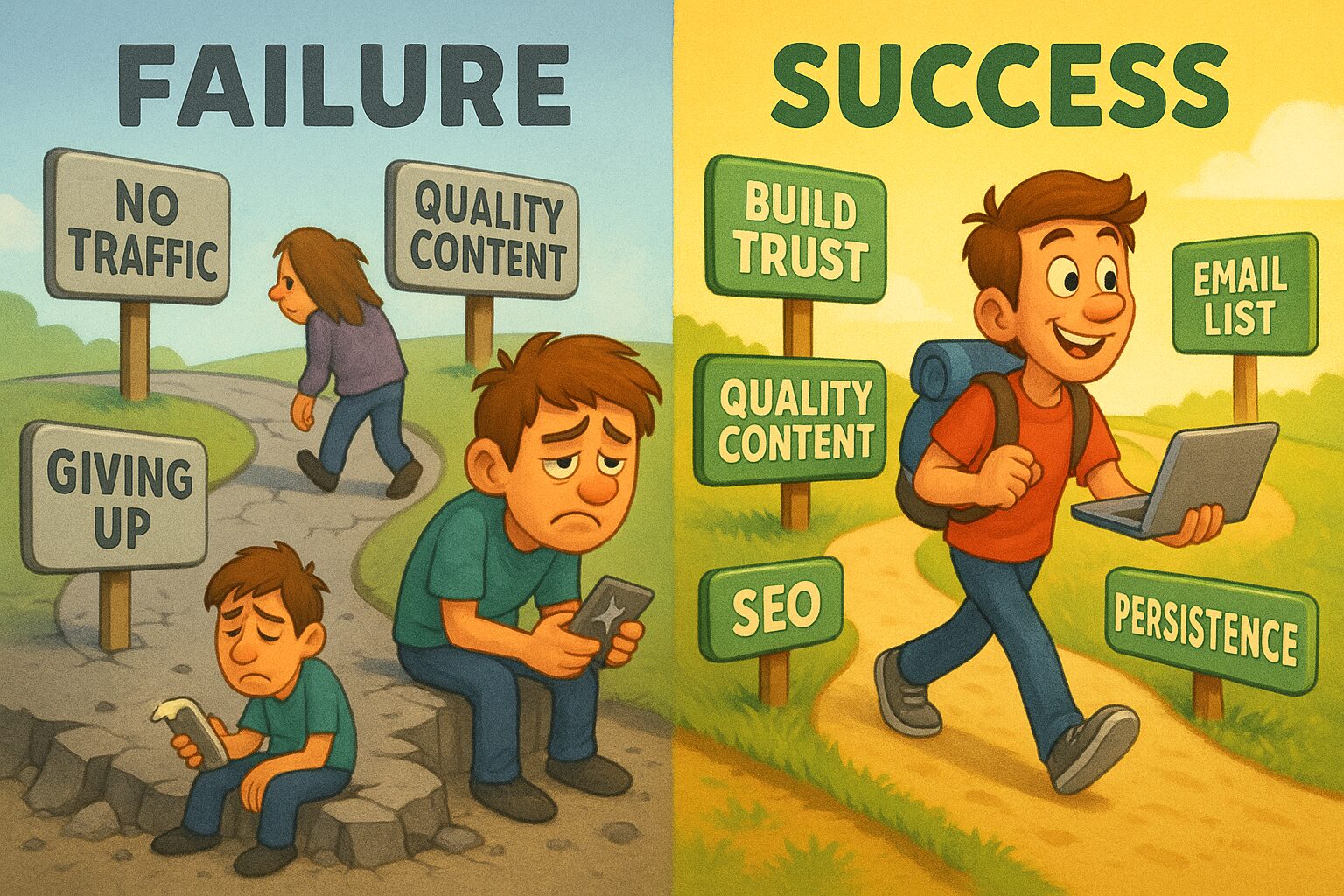


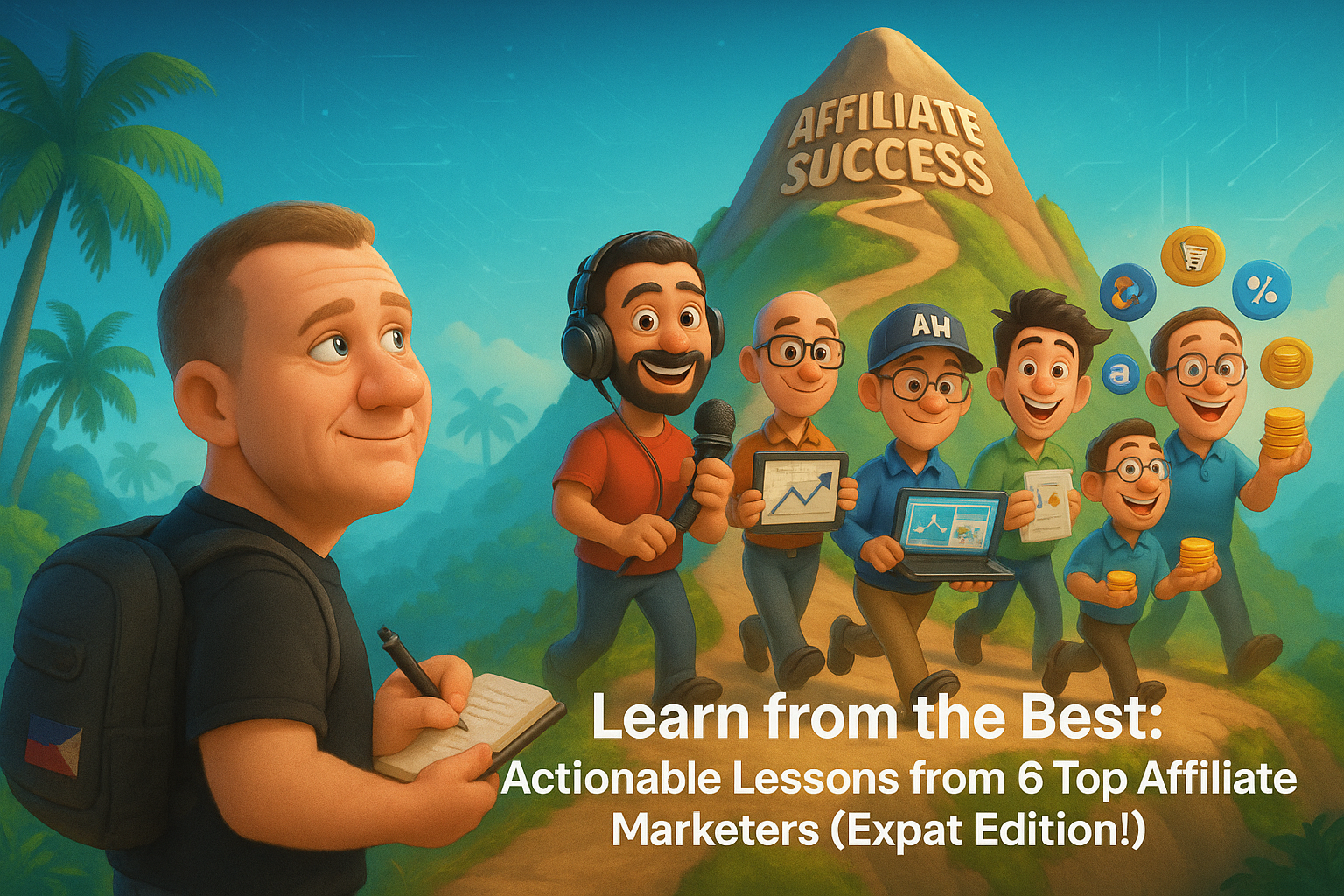

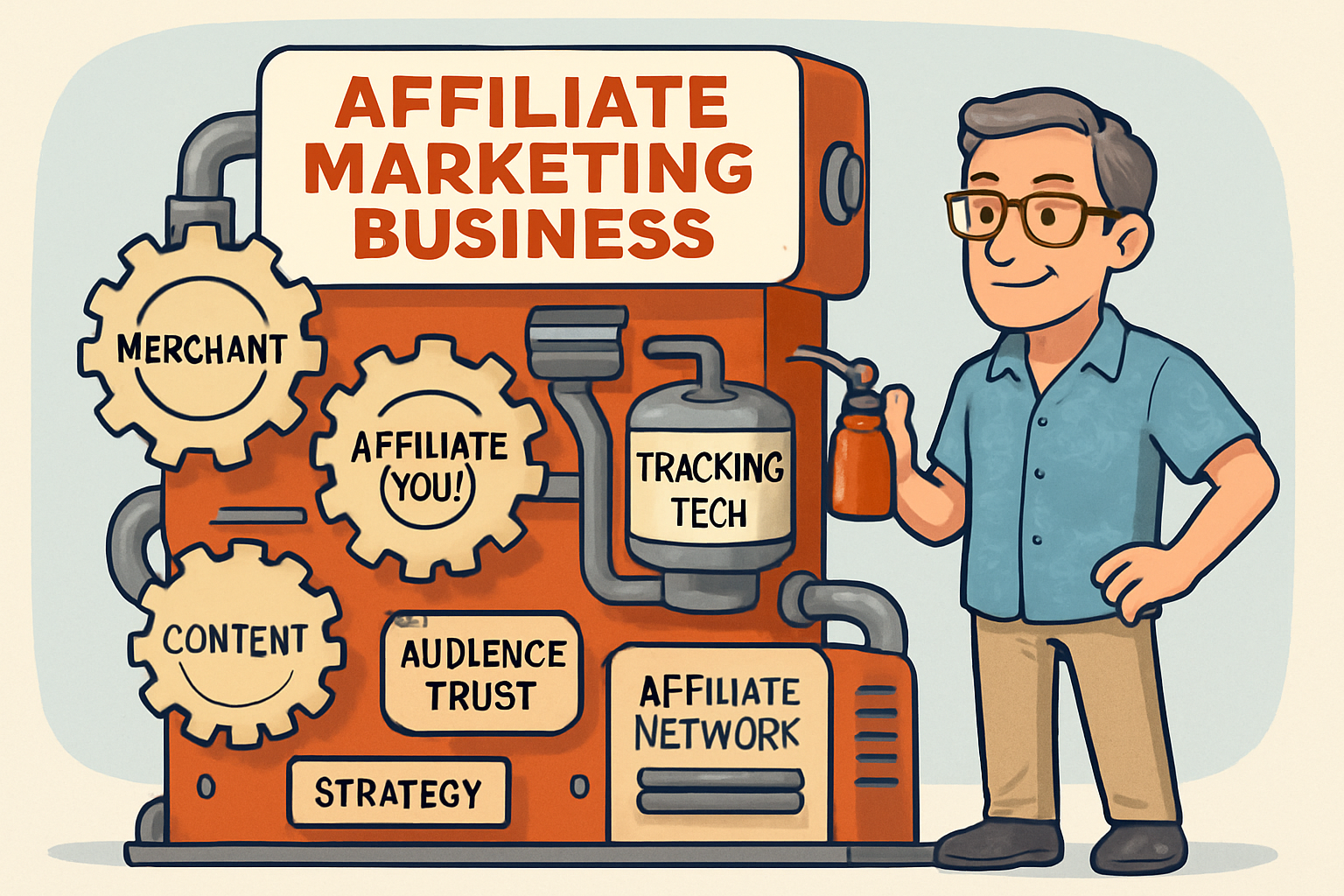





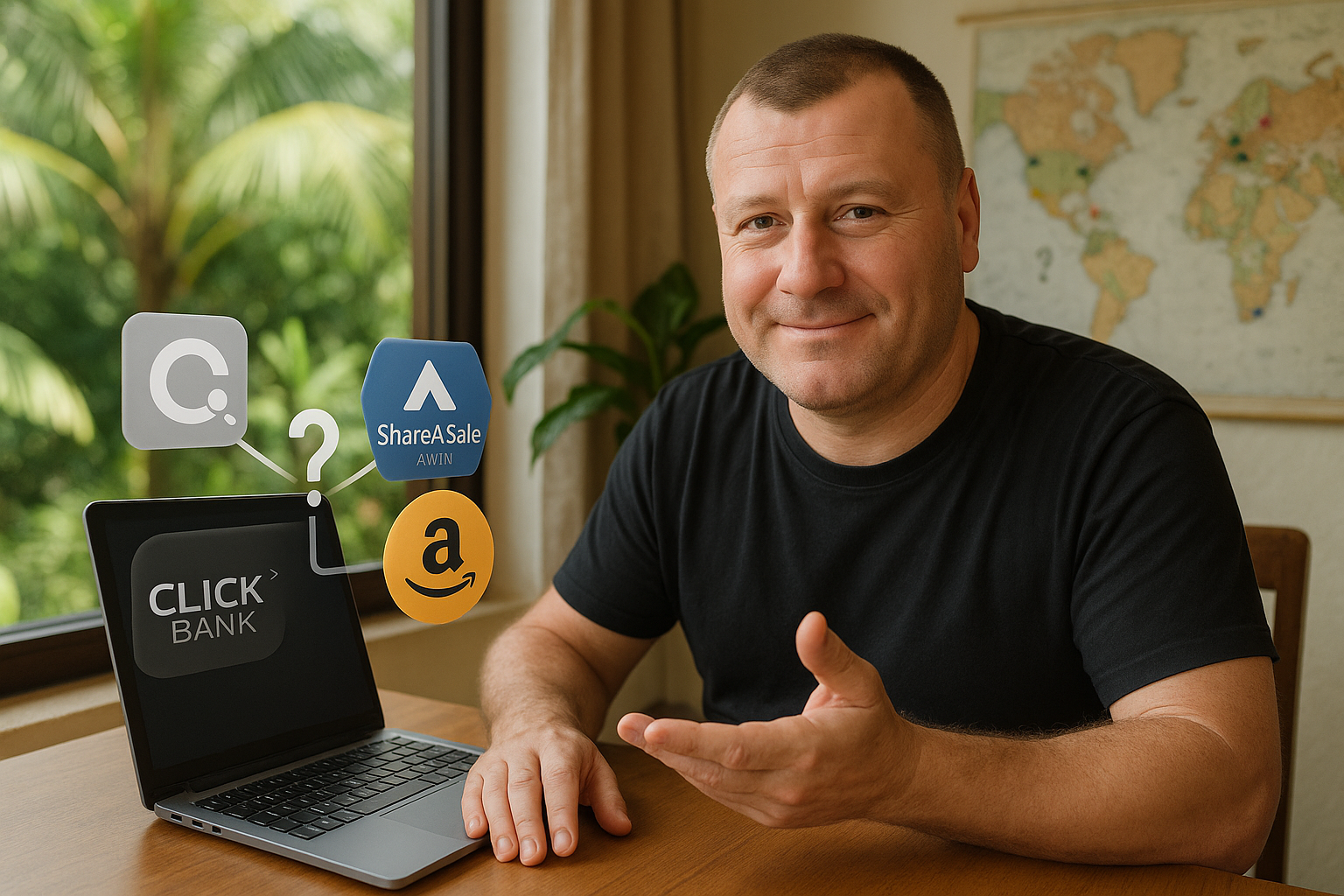
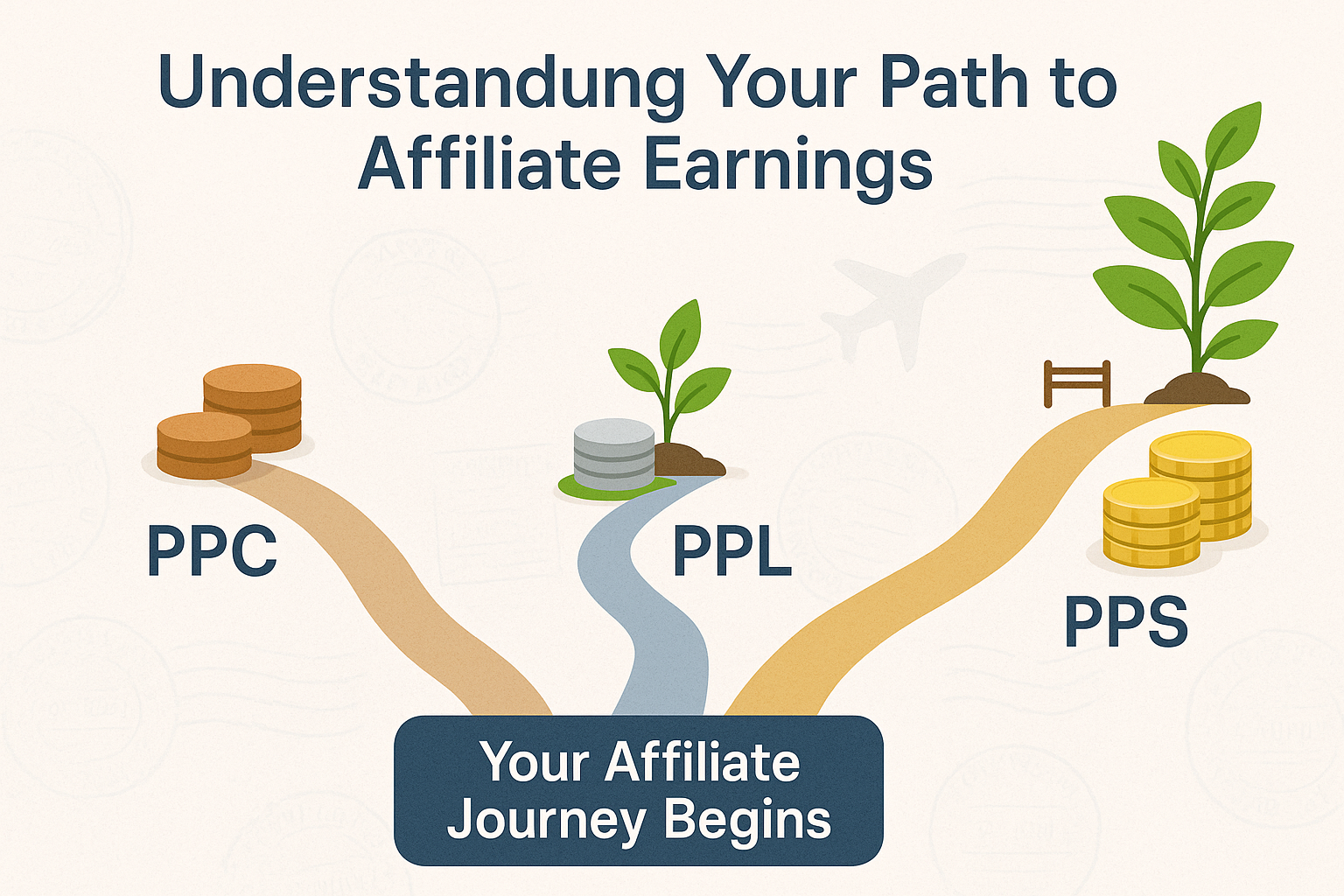
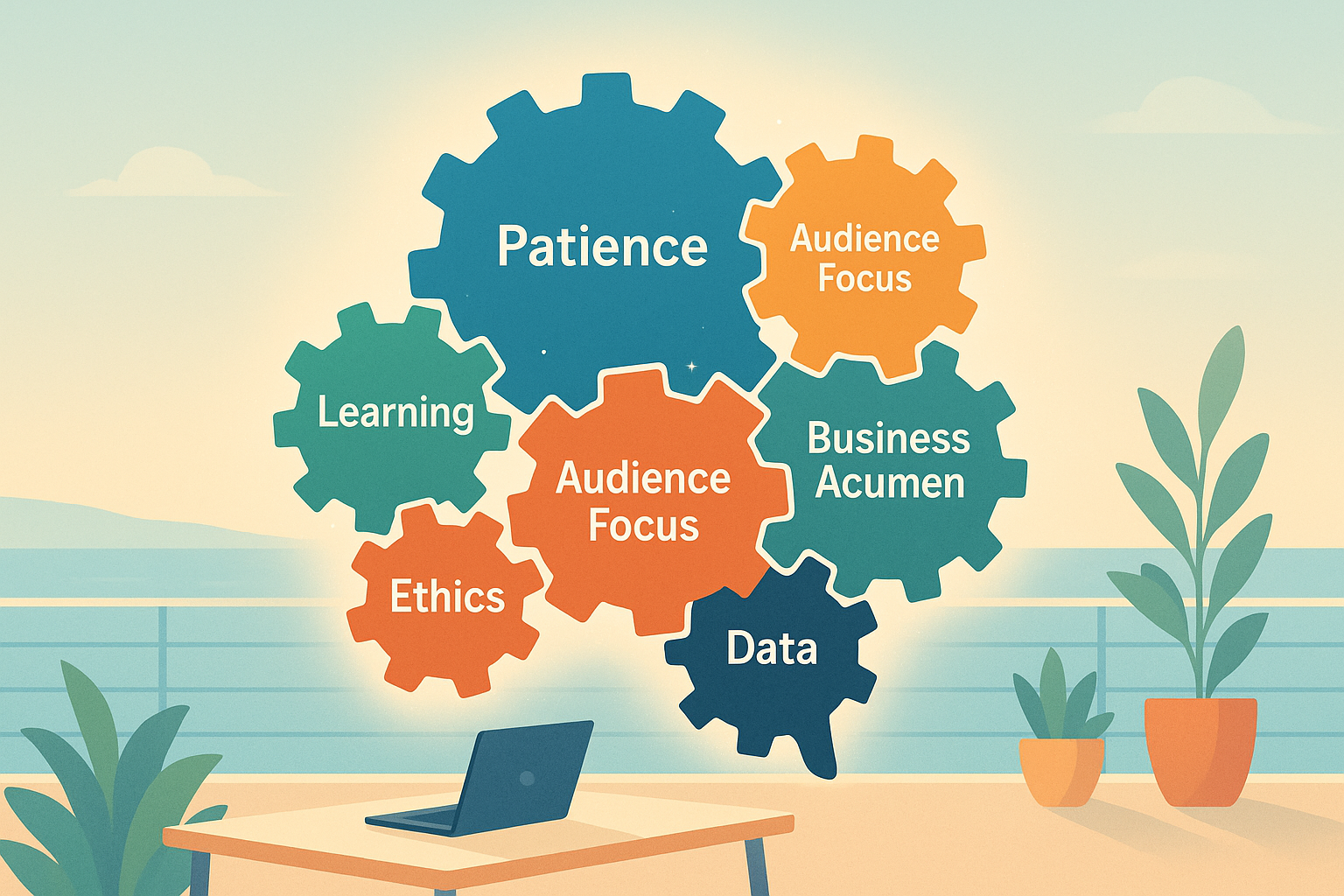
Leave a Reply